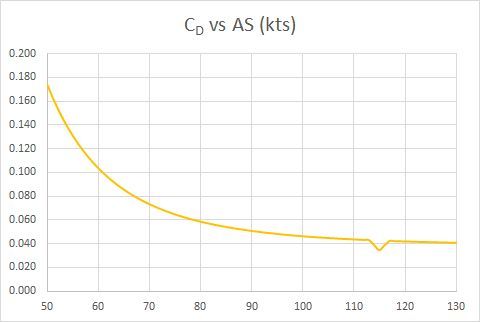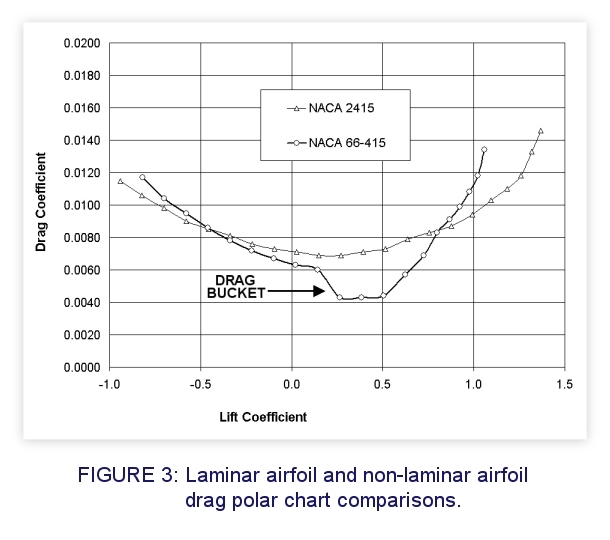denopa wrote:
But we’re also talking about jets?
What other sort of aircraft are there? :)
edited:
Ah, I know what you mean now. Turboprops as well!
I can understand how “the step” could work IF your cruise speed was at the bottom of the drag curve, or there abouts. But that is rare unless you’re choosing a really slow cruise speed.
But the bit that really doesn’t make sense to me is that if you can get such a performance advantage, how can you hold it? I mean nobody, not even an autopilot can hold altitude exactly. Autopilots might hold it with within 10-20 feet, and a human probably no better than 30-40 feet over any length of time (much worse for me!). And even if you could hold it exactly, the up and down drafts that you will inevitably encounter, will mean that you’ll still end up with accelerations and decelerations.
So this means that you end up doing lots of little climbs and descents. If the descents gave “the step” then surely all these little climbs take it away again. To me if you get an advantage by descending that you don’t get by climbing, then surely all this tiny climbs and descents end up eating away at that advantage very quickly?
Dave_Phillips wrote:
The original question – no. Just think it through for a minute or so.
What does that mean?
denopa wrote:
If you want to get to your cruise speed faster, simply level off at your target altitude but stay on climb power until you’ve got the right IAS
Exactly. All this crazy talk of overshooting your target altitude and then descending again makes zero sense, unless you have no excess power available, and that would mean that you normally cruise at max RPM and max manifold pressure. I realise you might cruise at full MP if non-turbo, but does anyone out there cruise at maximum RPM? Except perhaps Peter when he’s at 21,001ft.
I realise you might cruise at full MP if non-turbo, but does anyone out there cruise at maximum RPM? Except perhaps Peter when he’s at 21,001ft.
Any plane will need to be at “best power” to reach it’s operating ceiling, by definition, obviously.
Any non-turbo petrol-burning plane will need to be at “best power” i.e. about 150F ROP to reach the operating ceiling, and in practice the last 15% or so of the altitude capability will require max rated RPM.
However that is not the discussion. I don’t think anybody disputes that when you are trying to reach the operating ceiling there are two possible speeds for a given power setting – because you are on the bottom of the curve.
Peter wrote:
I still don’t get this, since all the functions describing flight in the cruise region context discussed here are monotonic.
I agree, a monotonic decreasing net power curve rules out any step.
But if it isn’t monotonic decreasing…
I made a fictitious drag curve, and put a crude “drag bucket” in it.

This gives us the following “Power Required” curve.

Now, adding an equally fictitious “Power Available” curve we get:

We now get three curve crossings, i.e. three equilibrium points where power available matches power required.
However, only the outside two are stable, and so realistically there are two possible speeds for the same power setting, i.e. we have a “step”.
A couple of points, which seem to match what people report:
1) You would only see this if the curves met in the step region, and so even if there were a step, you would need just the right altitude and/or throttle setting to observe it. Otherwise, climbing above target altitude and then coming back down is pointless.
2) If you are at the magic power setting, and you are slower than the step speeds, e.g. because you have just finished climbing, then you will not have the power available to accelerate past the lower speed.
Of course normally you can just open the throttle a little, (raising the power available curve), accelerate through the middle region, and then throttle back again.
Or if the throttle is already wide-open, (because you are Ernest Gann fighting a headwind over mountains  ), you can climb above target altitude, and then use gravity to give you the temporary extra power you need, i.e. dive and then approach the higher speed from the right.
), you can climb above target altitude, and then use gravity to give you the temporary extra power you need, i.e. dive and then approach the higher speed from the right.
This doesn’t prove anything, because I made up the curves, but at least the physics works, (I think  ).
).
This leads to the Q of what could possibly create such a drag bucket.
Massive elevator flutter, perhaps 
Or a dog sticking it’s head out of the window, and only between 150 and 155kt?
I just don’t see the required physics being present.
Sure you can get the flow changing from laminar to turbulent (as with any fluid, above some flow velocity) but would it ever change back again to laminar? We aren’t talking about passing through mach 1 where you do get a drag bucket.
Peter wrote:
I just don’t see the required physics being present.Neither do I and, in over 30 years of flying, have yet to see anyone actually demonstrate the phenomenon.

The “secret” behind the P-51 Mustang 
However, we are not talking about best L/D flight. Nobody disputes there are two speeds for the same power. We are talking about normal piston GA cruise i.e.
